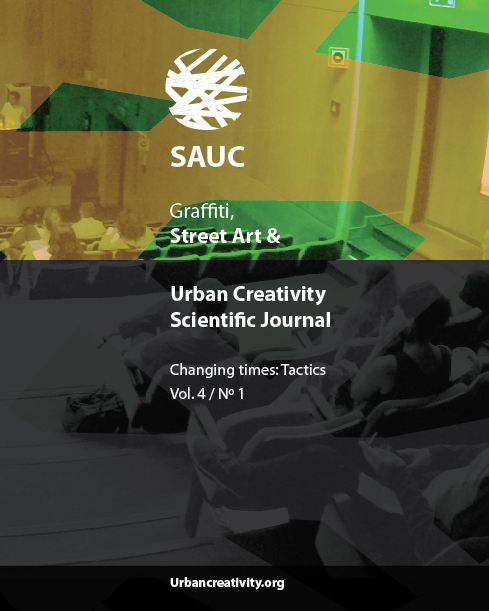The posturban paradigm and where street art and graffiti are not (going to be)
DOI:
https://doi.org/10.25765/sauc.v4i1.129Keywords:
posturban, street art, graffiti, post-contemporary, future cities, smart cityAbstract
Over the past decade, we faced a great outcome and success of urban creativity because cities started to adopt it for image branding within a global competition. This output is tied to the possibility of diverse aesthetic experiences in the urban space. But is this development also meant to last in the future? What can be said about the urban imaginary, planned by global investors or the military complex? The aim of this working paper is to shed light on the desired future urban space, already realized in ambitious projects around the globe. By adopting the post-contemporary critique on the discourse of the urban, it appears that the future is already present in ‘ghost-cities’ that do not embrace urban creativity anymore, but overtly try to avoid or even fight it.
Downloads
Global Statistics ℹ️
|
149
Views
|
0
Downloads
|
|
149
Total
|
|
Downloads
Published
How to Cite
Issue
Section
License
Those authors who publish in this journal accept the following terms:
-
Authors retain copyright.
-
Authors transfer to the journal the right of first publication. The journal also owns the publishing rights.
-
All published contents are governed by an Attribution-NoDerivatives 4.0 International License.
Access the informative version and legal text of the license. By virtue of this, third parties are allowed to use what is published as long as they mention the authorship of the work and the first publication in this journal. If you transform the material, you may not distribute the modified work. -
Authors may make other independent and additional contractual arrangements for non-exclusive distribution of the version of the article published in this journal (e.g., inclusion in an institutional repository or publication in a book) as long as they clearly indicate that the work was first published in this journal.
- Authors are allowed and recommended to publish their work on the Internet (for example on institutional and personal websites), following the publication of, and referencing the journal, as this could lead to constructive exchanges and a more extensive and quick circulation of published works (see The Effect of Open Access).













